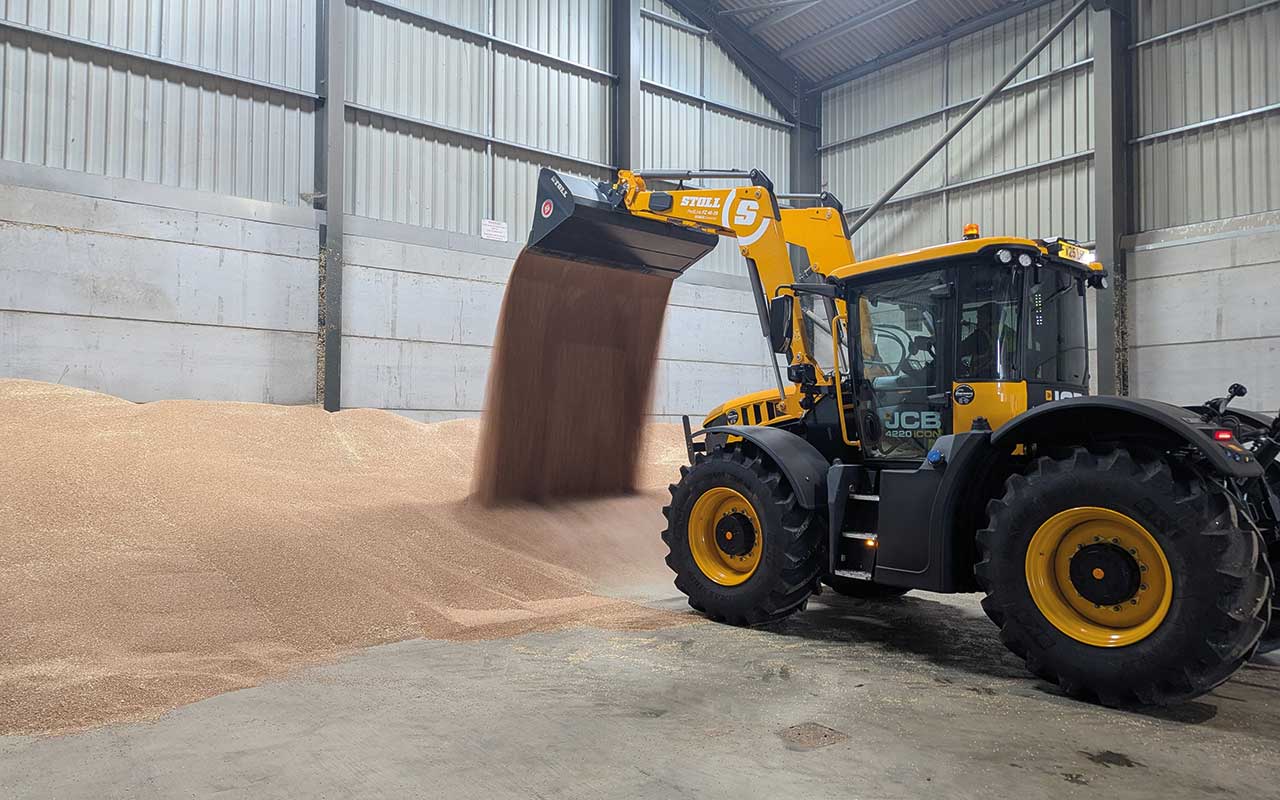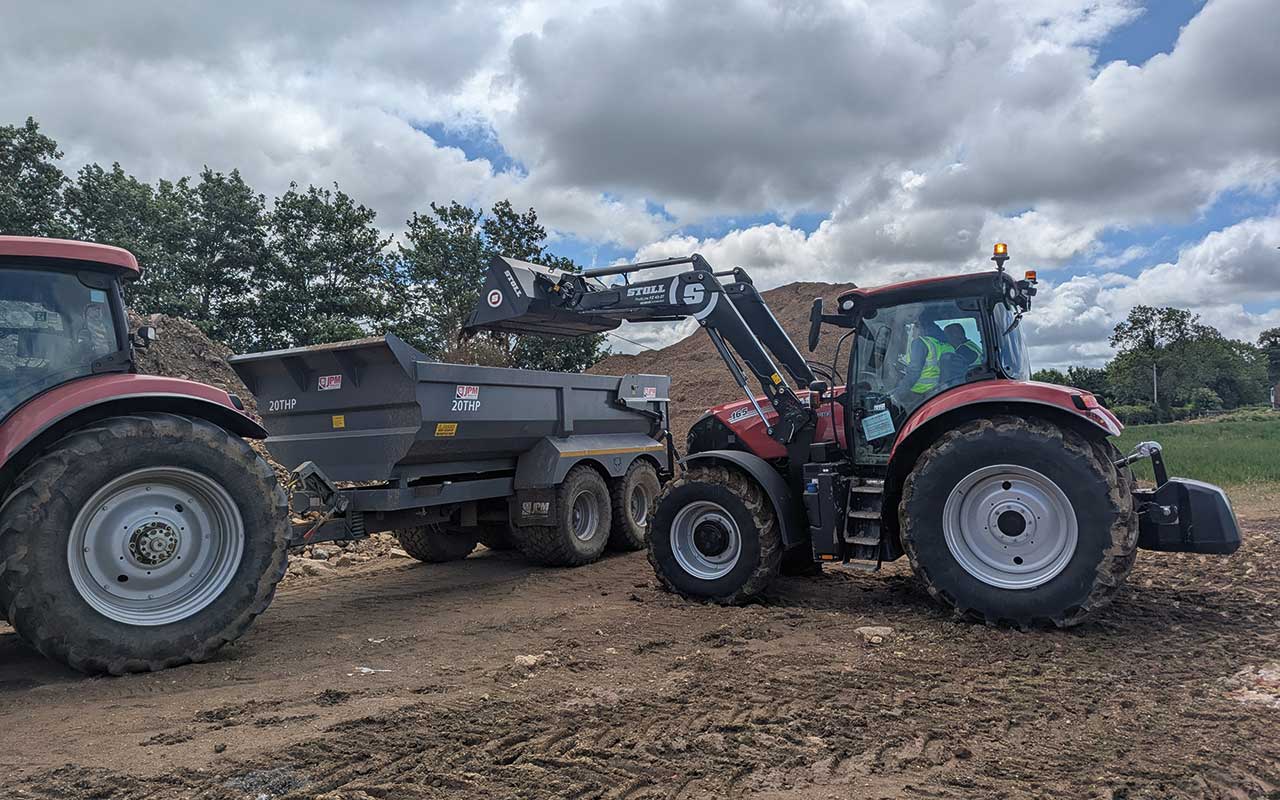The steady increase in the size of tractors means that the classic image of a loader tractor – often the oldest in the yard – isn’t necessarily true anymore.
There is increasing demand for loaders to fit on larger tractors to increase the versatility of every power unit on the farm.
Combine this with the near-universal integration of Isobus technology in new tractors, and it isn’t a huge leap in logic to suggest that many loader tractors on large farms and contracting yards will be using Isobus for other operations.
Stoll has looked to capitalise on this with its Isobus-connected loader. Based on the existing Profiline range, it brings with it several advantages, according to Nick Ewbank, managing director of UK importer Lynx Engineering.
“The key benefit is the ability to easily link and configure the loader controls into the tractor’s control scheme,” he says.
“However, there are other practical reasons for choosing an Isobus loader. All the valves and control units are integrated into the boom, and there is no need for dedicated mid-mount valves.
“All the owner needs is an Isobus-connected tractor with either Power Beyond or a load-sensing spool with return and we can link it directly to the rear valves.”
With fewer requirements to fit the loader, the price doesn’t rise excessively when compared to existing Profiline machines.
Looking at the machines available on the day, for a Profiline FZ 43-27 suited to a Case Puma 165, with mechanical self-levelling, third service, comfort drive and the Pro Control joystick, users would be looking at a retail price of £16,370. This increases by just over £1,200 to £17,590 with the Isobus model.
The larger FZ 46-29 fitted to the JCB Fastrac 4220 would retail for £17,900 as a standard model, increasing to £19,120 for Isobus. These price increases would also be balanced out, especially when looking at a new tractor, because the requirement for mid-mount spools is eliminated.
“It’s also about moving with the times,” Nick says. “This technology is coming down through the ranges to tractors from 100hp and the younger generation is keen to use it. If the tractor has Isobus, why wouldn’t you want to maximise its utilisation?”
Another important note is that Stoll has used a Y-piece Isobus connector. This means that if the loader stays on the tractor at all times, Isobus-connected implements can still be mounted on the rear and used as normal.
Isobus loading
The benefits of the Isobus loader are that it integrates a host of features into the machine, all controlled electronically, which would have previously been either unavailable or priced as an optional extra.
After a day testing the machines, the easiest way to describe it is that it turns a tractor and loader combination into something akin to a telehandler.
It also improves existing features within the Stoll range. The Comfort Drive system now has two accumulators to dampen jolts when travelling with a load. Thanks to the Isobus connectivity, this system also adapts to the weight of the load, which feeds into the end position dampening as well.
Continuing with the comparisons to a telehandler, functions that would be part of a technology package are included here, such as bucket shake, return to position and an adjustable working range for the loader to avoid coming into contact with shed roofs or other obstacles.

Simple set-up
Our first task was with the FZ 43-27, loading topsoil and rubble into a trailer. Setting up the different functions through the tractor’s Isobus screen was simple, with each joystick button visually represented on the display.
When you click on the desired button, the list of possible functions come up. Much like setting up the equivalent functions on a telehandler, it’s then normally a case of running through a single task to set the desired control.
So, with return to position, we lowered the boom and levelled the bucket, ready to dig into the pile, and then used the terminal to set this position. This worked the same way for setting our tipping and maximum height positions. During work, we were then able to activate these positions with one touch.
Another neat point is that the system can memorise the control schemes of up to two tractors per loader, and as attaching and detaching has been made far quicker with the design changes, this will be particularly handy.
User profiles can also be set up, as well as implement profiles. With the latter, the loader will recognise Stoll implements and automatically recall settings from the last use.
For repetitive tasks, users can go a step further, using the Teach In function. This could be likened to a headland management system, where the user records a sequence of actions.
So when loading grain, for example, you would have the dig-in position as the first step, lifting and crowding the bucket as the second, perhaps a transport position as the third and the tip position as the final step.
This felt intuitive to set up and is easy to use. For our test, we simply pulled back on the joystick to activate each step. However, the user does still need to be aware.
Once the loader reaches each point, there is only a moment or two before it starts moving on to the next. If you were to put return to position as the final step, you can easily hit the side of the trailer if you’re not paying attention.

Hydraulic pressure
For work with a bale grab, it’s also possible to set a maximum hydraulic pressure to stop over-squeezing and damaging the bales.
This is a good idea, but is the only function that feels a little clunky in practice. Once you’ve activated the grab, the operator has to let go of the joystick and allow the implement to close on its own, which is slower than it would be if you were eyeballing the process.
For experienced operators, this will likely feel inefficient and unnecessary, but it’s really a minor issue compared to the benefits elsewhere.
A weighing function rounds out the major functions of the system. According to Nick, this isn’t accurate enough to be invoiceable, with a +/- variance of about 2%. However, it will be useful for monitoring weights when loading feeder wagons, and each measurement can be added up or subtracted from a total weight.
When weighing the loader will automatically lift to a level position – which needs to be considered if navigating tight yards or low buildings – and this process can be done while moving.
For greater levels of accuracy, the weight of the implement is accounted for, and when using pallet tines, it is possible to take a base weight so that the pallet is discounted.
Given the small cost increase and the host of features integrated into the Isobus loader, there aren’t many good reasons for those looking at a new loader, or tractor/loader combination, to not consider the Stoll Isobus machines. The technology package, combined with the ease of attachment, makes it a great option.
Not only that, but it allows users to operate the system within a tractor control layout that they are familiar with, and depending on the loader joysticks offered by the manufacturer, it is possible to configure a huge amount of functions to one lever.



